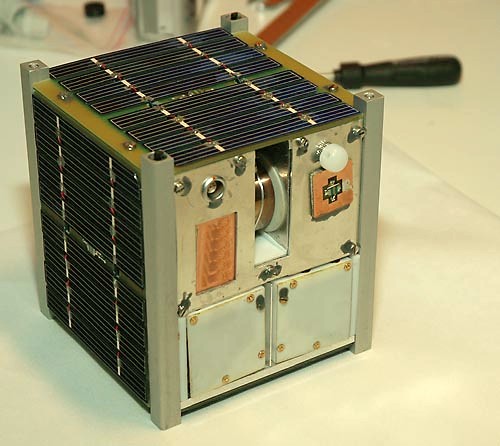|
NELIOTA
Near-Earth object Lunar Impacts and Optical TrAnsients (NELIOTA) was a research project of the European Space Agency in collaboration with the National Observatory of Athens that aimed to determine the distribution and frequency of small near-earth objects by monitoring lunar impact flashes using a 1.23 m telescope in the Kryoneri Observatory. The observations took place from 2017 to 2023. During these years, 192 lunar impact flashes were detected, and the size and mass of the asteroids were also measured, as well as the temperature during the collisions and the size of the craters created. As a result, apart from completing its main goal, it also became the largest study on asteroid collisions with the Moon. Hardware Telescope The NELIOTA project used a 1.23 meter Cassegrain type telescope located in the Kryoneri Observatory in southern Greece. The Korgialenio telescope, as it is often called, is a telescope manufactured in 1975 by Grubb Parsons and has a parabolic prima ... [...More Info...] [...Related Items...] OR: [Wikipedia] [Google] [Baidu] |
Kryoneri Observatory
The Kryoneri Observatory (Greek: Αστεροσκοπείο Κρυονερίου), also known as the Kryoneri Astronomical Station (Αστρονομικός Σταθμός Κρυονερίου), is an astronomical observatory in Corinthia, Greece, operated by the IAASARS research institute of the National Observatory of Athens. It is home of one of the largest telescopes in Greece, a Cassegrain reflector, which was used for the NELIOTA project of ESA and NOA. The observatory is also housing smaller instruments that are conducting research for IAASARS and are participating in international programmes. History The Kryoneri Observatory was established in 1972 and in 1975 its first telescope was installed, a Cassegrain reflector manufactured by Grubb Parsons, a British company based in Newcastle. The telescope was financed by the bequest of Marinos Korgialenios, a businessman and national benefactor of Greece who had bequested 200,000 drachmes to the National Observatory of ... [...More Info...] [...Related Items...] OR: [Wikipedia] [Google] [Baidu] |
Near-Earth Object
A near-Earth object (NEO) is any small Solar System body orbiting the Sun whose closest approach to the Sun ( perihelion) is less than 1.3 times the Earth–Sun distance (astronomical unit, AU). This definition applies to the object's orbit around the Sun, rather than its current position, thus an object with such an orbit is considered an NEO even at times when it is far from making a close approach of Earth. If an NEO's orbit crosses the Earth's orbit, and the object is larger than across, it is considered a potentially hazardous object (PHO). Most known PHOs and NEOs are asteroids, but about a third of a percent are comets. There are over 37,000 known near-Earth asteroids (NEAs) and over 120 known short-period near-Earth comets (NECs). A number of solar-orbiting meteoroids were large enough to be tracked in space before striking Earth. It is now widely accepted that collisions in the past have had a significant role in shaping the geological and biological history of Ea ... [...More Info...] [...Related Items...] OR: [Wikipedia] [Google] [Baidu] |
National Observatory Of Athens
The National Observatory of Athens (NOA; ) is a research institute in Athens, Greece. Founded in 1842, it is the oldest List of research institutes in Greece, research foundation in Greece. The Observatory was the first scientific research institute built after Greece became independent in 1829, and one of the oldest research institutes in Southern Europe. It was built around the same period as the United States Naval Observatory. The world-renowned Greek-Austrian astronomer Georgios Konstantinos Vouris lobbied to create the National Observatory of Athens in the newly founded state. He persuaded wealthy Greek-Austrian banker Georgios Sinas to pay for the new massive observatory. The Austrian-born Otto of Greece, Greek King found out the news and awarded Georgios Sinas's son the Order of the Redeemer. The King also selected the architects for the building under Georgios Konstantinos Vouris's supervision, which were Eduard Schaubert and Theophil Hansen. The Athens observatory sinc ... [...More Info...] [...Related Items...] OR: [Wikipedia] [Google] [Baidu] |
CubeSat
A CubeSat is a class of small satellite with a form factor of cubes. CubeSats have a mass of no more than per unit,, url=https://static1.squarespace.com/static/5418c831e4b0fa4ecac1bacd/t/5f24997b6deea10cc52bb016/1596234122437/CDS+REV14+2020-07-31+DRAFT.pdf , title=Cubesat Design Specification , publisher=California Polytechnic State University, San Luis Obispo, Cal Poly SLO , year=2020 , location=San Luis Obispo , pages=12 and often use commercial off-the-shelf (COTS) components for their electronics and structure. CubeSats are deployed into orbit from the International Space Station, or launched as secondary payloads on a launch vehicle. , more than 2,300 CubeSats have been launched. In 1999, California Polytechnic State University (Cal Poly) professor Jordi Puig-Suari and Bob Twiggs, a professor at Stanford University Space Systems Development Laboratory, developed the CubeSat specifications to promote and develop the skills necessary for the design, manufacture, and testing of ... [...More Info...] [...Related Items...] OR: [Wikipedia] [Google] [Baidu] |
Moonbase
A moonbase (or lunar base) is a human outpost on or below the surface of the Moon. More than a mere site of activity or temporary camp, moonbases are extraterrestrial bases, supporting uncrewed spaceflight, robotic or crewed spaceflight, human activity, by providing surface infrastructure. List of missions to the Moon, Missions to the Moon have realized single-mission bases, (Tranquility Base being the first), as well as Moon#Human presence, some small permanent infrastructure like Lunar Laser Ranging Experiment, lunar laser ranging installations. Plans for establishing moonbases, with surface or sub-surface research stations, have been proposed and are actively pursued nationally and increasingly internationally. As of 2024, the two most advanced projects to set up moonbases have been pursued Multilateralism, multilaterally as part of the United States, US-led Artemis program, with its planned Artemis program#Shelter building construction, Artemis Base Camp and as the China-led ... [...More Info...] [...Related Items...] OR: [Wikipedia] [Google] [Baidu] |
Meteoroid
A meteoroid ( ) is a small rocky or metallic body in outer space. Meteoroids are distinguished as objects significantly smaller than ''asteroids'', ranging in size from grains to objects up to wide. Objects smaller than meteoroids are classified as ''micrometeoroids'' or ''space dust''. Many are fragments from comets or asteroids, whereas others are impact event, collision impact space debris, debris ejected from bodies such as the Moon or Mars. The visible passage of a meteoroid, comet, or asteroid atmospheric entry, entering Earth's atmosphere is called a meteor, and a series of many meteors appearing seconds or minutes apart and appearing to originate from the same fixed point in the sky is called a meteor shower. An estimated 25 million meteoroids, micrometeoroids and other space debris enter Earth's atmosphere each day, which results in an estimated 15,000 tonnes of that material entering the atmosphere each year. A ''meteorite'' is the remains of a meteoroid that has surv ... [...More Info...] [...Related Items...] OR: [Wikipedia] [Google] [Baidu] |
Plume (fluid Dynamics)
In hydrodynamics, a plume or a column is a vertical body of one fluid moving through another. Several effects control the motion of the fluid, including momentum (inertia), diffusion and buoyancy (density differences). Pure '' jets'' and pure ''plumes'' define flows that are driven entirely by momentum and buoyancy effects, respectively. Flows between these two limits are usually described as forced plumes or buoyant jets. "Buoyancy is defined as being positive" when, in the absence of other forces or initial motion, the entering fluid would tend to rise. Situations where the density of the plume fluid is greater than its surroundings (i.e. in still conditions, its natural tendency would be to sink), but the flow has sufficient initial momentum to carry it some distance vertically, are described as being negatively buoyant. Movement Usually, as a plume moves away from its source, it widens because of entrainment of the surrounding fluid at its edges. Plume shapes can be influenced ... [...More Info...] [...Related Items...] OR: [Wikipedia] [Google] [Baidu] |
Melting
Melting, or fusion, is a physical process that results in the phase transition of a substance from a solid to a liquid. This occurs when the internal energy of the solid increases, typically by the application of heat or pressure, which increases the substance's temperature to the melting point. At the melting point, the ordering of ions or molecules in the solid breaks down to a less ordered state, and the solid melts to become a liquid. Substances in the molten state generally have reduced viscosity as the temperature increases. An exception to this principle is elemental sulfur, whose viscosity increases in the range of 130 °C to 190 °C due to polymerization. Some organic compounds melt through mesophases, states of partial order between solid and liquid. First order phase transition From a thermodynamics point of view, at the melting point the change in Gibbs free energy ''∆G'' of the substances is zero, but there are non-zero changes in the entha ... [...More Info...] [...Related Items...] OR: [Wikipedia] [Google] [Baidu] |
Kelvin
The kelvin (symbol: K) is the base unit for temperature in the International System of Units (SI). The Kelvin scale is an absolute temperature scale that starts at the lowest possible temperature (absolute zero), taken to be 0 K. By definition, the Celsius scale (symbol °C) and the Kelvin scale have the exact same magnitude; that is, a rise of 1 K is equal to a rise of 1 °C and vice versa, and any temperature in degrees Celsius can be converted to kelvin by adding 273.15. The 19th century British scientist Lord Kelvin first developed and proposed the scale. It was often called the "absolute Celsius" scale in the early 20th century. The kelvin was formally added to the International System of Units in 1954, defining 273.16 K to be the triple point of water. The Celsius, Fahrenheit, and Rankine scales were redefined in terms of the Kelvin scale using this definition. The 2019 revision of the SI now defines the kelvin in terms of energy by setting the Bo ... [...More Info...] [...Related Items...] OR: [Wikipedia] [Google] [Baidu] |
Radius
In classical geometry, a radius (: radii or radiuses) of a circle or sphere is any of the line segments from its Centre (geometry), center to its perimeter, and in more modern usage, it is also their length. The radius of a regular polygon is the line segment or distance from its center to any of its Vertex (geometry), vertices. The name comes from the Latin ''radius'', meaning ray but also the spoke of a chariot wheel.Definition of Radius at dictionary.reference.com. Accessed on 2009-08-08. The typical abbreviation and mathematical symbol for radius is ''R'' or ''r''. By extension, the diameter ''D'' is defined as twice the radius:Definition of radius at mathwords.com. ... [...More Info...] [...Related Items...] OR: [Wikipedia] [Google] [Baidu] |
Mass
Mass is an Intrinsic and extrinsic properties, intrinsic property of a physical body, body. It was traditionally believed to be related to the physical quantity, quantity of matter in a body, until the discovery of the atom and particle physics. It was found that different atoms and different elementary particle, elementary particles, theoretically with the same amount of matter, have nonetheless different masses. Mass in modern physics has multiple Mass in special relativity, definitions which are conceptually distinct, but physically equivalent. Mass can be experimentally defined as a measure (mathematics), measure of the body's inertia, meaning the resistance to acceleration (change of velocity) when a net force is applied. The object's mass also determines the Force, strength of its gravitational attraction to other bodies. The SI base unit of mass is the kilogram (kg). In physics, mass is Mass versus weight, not the same as weight, even though mass is often determined by ... [...More Info...] [...Related Items...] OR: [Wikipedia] [Google] [Baidu] |
Last Quarter
A lunar phase or Moon phase is the apparent shape of the Moon's directly sunlit portion as viewed from the Earth. Because the Moon is tidally locked with the Earth, the same hemisphere is always facing the Earth. In common usage, the four major phases are the new moon, the first quarter, the full moon and the last quarter; the four minor phases are waxing crescent, waxing gibbous, waning gibbous, and waning crescent. A lunar month is the time between successive recurrences of the same phase: due to the eccentricity of the Moon's orbit, this duration is not perfectly constant but averages about 29.5 days. The appearance of the Moon (its phase) gradually changes over a lunar month as the relative orbital positions of the Moon around Earth, and Earth around the Sun, shift. The visible side of the Moon is sunlit to varying extents, depending on the position of the Moon in its orbit, with the sunlit portion varying from 0% (at new moon) to nearly 100% (at full moon). Phenomenon Th ... [...More Info...] [...Related Items...] OR: [Wikipedia] [Google] [Baidu] |








